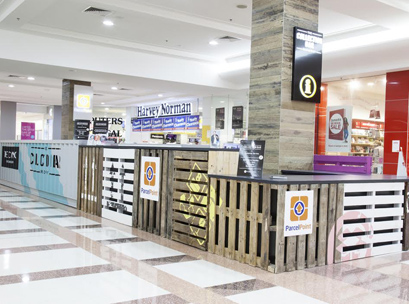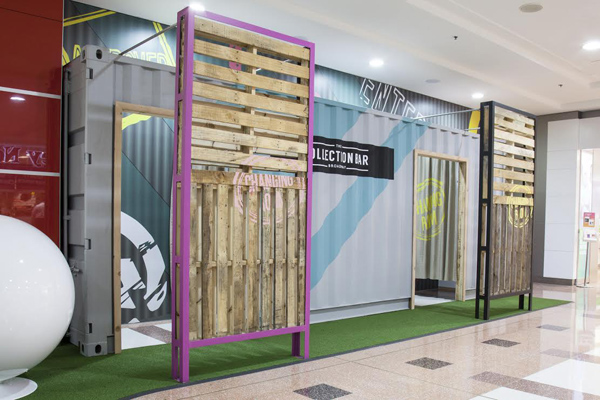Franchising, retail, business

02/10/2014
The shopping centre industry has gone through various stages of grief in response to the popularity of e-commerce over recent years.
These phases have roughly followed the Kubler-Ross model of denial, anger, bargaining, depression, and acceptance, although one can argue about the exact sequence.
We could now be entering upon a sixth and a seventh stage though – bravado and profit.
The bravado has been increasing in volume recently amid a material slowing in the growth of e-commerce itself.
The NAB Online Retail Index Report, which has breathlessly exalted the rise of e-commerce for several years now, admitted grudgingly in June that online sales increased percentage-wise by barely more than mid-single digits in the year through April.
Add to that the fact that a rash of online retailers are announcing store openings, and it’s been a good time for shopping centre PR.
But it isn’t all just about feeling less insecure about the future – shopping centre operators are actively seeking ways to embrace e-commerce and profit from it.
In one example, Broadway Shopping Centre in Sydney’s inner west has teamed up with online fashion retailer, The Iconic, and e-commerce delivery platform ParcelPoint to create The Collection Bar, a promising collaboration that could be replicated elsewhere.
Broadway has the highest sales per square metre of any Australian shopping centre – it’s above $11,500 – and it didn’t get there by being slow to embrace trends.
Now, the concierge desk at Broadway is being used as a pick up location (The Collection Bar) for online purchases made from The Iconic and around 70 other retailers.
Shoppers can not only collect the items at the desk, but try them on immediately in one of the dedicated changing rooms created nearby.
If it doesn’t fit or the customer doesn’t like it, the concierge will arrange to have it packaged and returned. In the case of merchandise from The Iconic, the return is free.
Who wins and how? Clearly, the shopper wins because of the convenience of being able to pick up, try on and, if necessary, return the merchandise gratis.
The online retailer wins because Broadway is making a real estate facility available for customers to take receipt of merchandise in a secure environment. The ability of customers to return the goods easily also encourages more purchasing.
What about the shopping centre and its tenants? Broadway is located in a high density neighbourhood with a large number of busy professionals and students from the nearby University of Sydney, University of Technology Sydney, and other educational institutions.
These are people who have a high incidence of e-commerce purchasing, and rather than lament the fact, Broadway’s owner, Mirvac, is giving these people a reason to come to the shopping centre.
While at the centre, they will very likely buy something else, a practice that is made all the more probable if those staffing The Collection Bar are encouraged to suggest complementary items from shopping tenants.
Broadway Shopping Centre and Mirvac are not formally measuring cross-shopping behaviour associated with The Collection Bar, however, it is possible that the centre is enjoying a material benefit from a combination of incremental customer visits, incremental customers and incremental purchases from existing customers.
Moreover, it gets a big reputational tick simply for embracing the shopping preferences of the customers in its trade area. So where does this all lead? The benefits to a shopping centre for an arrangement like this are greater in trade areas with relatively higher incidence of online shopping.
If people are going to do it anyway, the reasoning goes, why wouldn’t the shopping centre try to grab a piece of the action?
The only potential problem with this argument is that the ease of returning merchandise purchased online encourages people to do more online shopping than they otherwise would, which, after all, is one of the reasons The Collection Bar arrangement suits retailers like The Iconic.
Is this additional online shopping crowding out shopping centre purchases?
Perhaps, but the likely net outcome is that all boats rise. The extent to which they do so can only be understood though if consumer behaviour is carefully measured through well designed research.
The Collection Bar is just one of a number of experiments we will see going forward that co-mingle online and traditional shopping.
Click and collect is destined to become ubiquitous among traditional retailers with their own store fleets, and ParcelPoint, a Sydney-based company that acts as the delivery and return conduit for The Collection Bar itself, has more than 1300 bricks and mortar partners that offer e-commerce shoppers an away from home pickup and return option.
With this growing blur across channels, shopping centre companies are increasingly seeing shopping as just shopping, with less of the hostility and angst toward e-commerce they might have harboured in the bad old days.
As they do so, everyone will end up holding hands tightly – the shopping centres, their tenants, the e-commerce retailers, and the biggest winners of all: consumers.
By:http://www.insideretail.com.au/blog/2014/10/02/e-commerce-drives-shopping-centres/